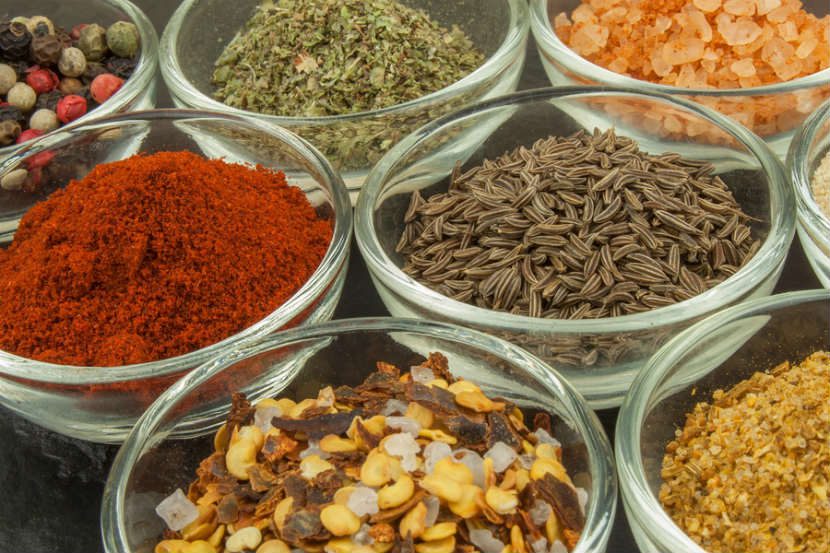Spices add depth, flavor, and complexity to any dish, and in addition to being delicious, they’re packed with essential nutrients, antioxidants, and anti-inflammatory properties that can help improve overall health and wellbeing. Some of the most popular spices include cinnamon, turmeric, cumin, ginger, paprika, and cayenne pepper. There are many creative ways to incorporate these spices into your cooking, from adding cinnamon to oatmeal or mixing turmeric with yogurt for a dipping sauce, to rubbing cumin on meat before slow cooking or mixing cayenne pepper with honey and rubbing it on chicken wings. By incorporating these spices into your cooking, you can add excitement and flavor to your meals while also improving your health.
Mastering the Art of Spices: Creative Ways to Use Different Spices in Cooking
Spices are often the unsung hero of any dish, adding depth, flavor, and complexity to even the simplest recipes. But beyond their delicious taste, these pantry staples are packed full of essential nutrients, antioxidants, and anti-inflammatory properties that can help improve overall health and wellbeing. In this article, we will explore some of the most popular spices and highlight creative ways to use them in your cooking.
Cinnamon
Cinnamon is one of the most versatile spices in the kitchen, and it’s easy to incorporate into your diet. It’s a good source of manganese, calcium, and fiber, and it can help regulate blood sugar levels, reduce inflammation, and fight off harmful bacteria. Cinnamon can be used in both sweet and savory dishes, and it pairs well with everything from apples and pumpkin to roasted vegetables and meats.
Creative uses:
– Sprinkle cinnamon over oatmeal or yogurt for a healthy and tasty breakfast.
– Mix cinnamon with honey and drizzle over roasted sweet potatoes or carrots.
– Add cinnamon to ground meat dishes (like chili or taco meat) for depth of flavor.
Turmeric
Turmeric is a bright yellow spice that’s commonly used in Indian and Middle Eastern cuisine. It’s a powerful antioxidant and anti-inflammatory agent and has been used for centuries to help treat a variety of ailments, including arthritis, digestive problems, and respiratory issues. Turmeric can add a unique flavor and depth to meat, rice, and vegetable dishes and is a good source of iron and vitamin C.
Creative uses:
– Add turmeric to rice dishes (like pilaf) for a vibrant yellow color and subtle flavor.
– Mix turmeric with yogurt or mayo for a homemade dipping sauce.
– Rub turmeric on chicken or fish before baking or grilling for a flavorful and colorful dish.
Cumin
Cumin is an earthy, warm spice that’s commonly used in Mexican and Middle Eastern cuisine. It’s a good source of iron, magnesium, and calcium, and it can help boost digestion and relieve symptoms of digestive issues. Cumin has a distinct flavor that can add depth to soups, stews, and even roasted vegetables.
Creative uses:
– Add cumin to homemade hummus or other bean dips for added flavor.
– Mix cumin with chili powder and rub on pork or beef before slow cooking for a flavorful and tender meat.
– Dust roasted vegetables or sweet potatoes with cumin for added flavor and depth.
Ginger
Ginger is a pungent, spicy root that’s commonly used in Asian and Indian cooking. It’s a good source of several essential vitamins and minerals, including potassium, magnesium, and vitamin B6, and it can help relieve nausea, reduce inflammation, and boost the immune system. Ginger can add a unique flavor to marinades, dressings, and even baking recipes.
Creative uses:
– Make homemade ginger tea by steeping fresh ginger in hot water for a delicious and soothing drink.
– Add grated ginger to stir fry dishes for a pop of flavor and texture.
– Mix ginger with honey and soy sauce for a quick and simple marinade for chicken or fish.
Paprika
Paprika is a red, slightly sweet spice that’s commonly used in Hungarian and Spanish cuisine. It’s a good source of vitamin A, which helps support healthy vision, immune function, and skin health. Paprika is often used as a garnish for deviled eggs, potato salad, or roasted meats, but it can also add subtle flavor and a pop of color to many different dishes.
Creative uses:
– Dust roasted nuts or chickpeas with smoked paprika for a delicious and healthy snack.
– Add paprika to cheese sauce or mac and cheese for added depth of flavor.
– Rub paprika on chicken or fish before baking or grilling for a colorful and flavorful dish.
Cayenne Pepper
Cayenne pepper is a fiery spice that’s commonly used in Southwestern and Tex-Mex cuisine. It’s a good source of antioxidants, vitamins, and minerals and may help boost metabolism, reduce pain, and improve heart health. Cayenne pepper adds heat and flavor to everything from scrambled eggs to chili and can be used sparingly for a more subtle heat.
Creative uses:
– Mix cayenne pepper with melted dark chocolate for a spicy and delicious treat.
– Add a pinch of cayenne pepper to homemade cornbread or biscuits for an unexpected burst of flavor.
– Mix cayenne pepper with honey and rub on chicken wings or drumettes for a fiery and delicious appetizer.
In conclusion, spices are an essential component of any kitchen, offering both flavor and nutritional benefits. By incorporating the spices discussed in this article into your cooking, you can add depth, complexity, and excitement to your meals while also improving your overall health and wellness.
